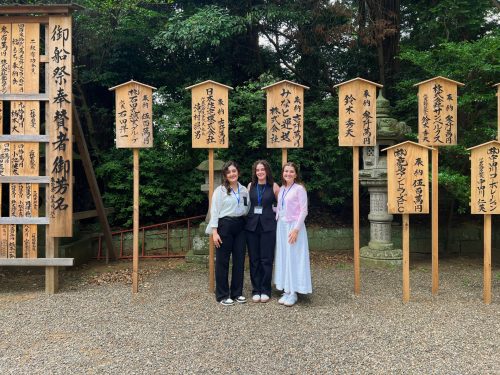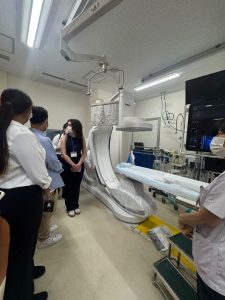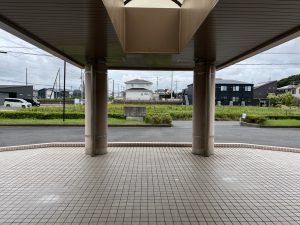
When I pictured visiting a hospital in Japan, I braced myself for the usual chaos: packed waiting rooms, beeping machines, stressed-out nurses, and at least one guy yelling about his back pain. Instead, I walked into Koyama Memorial Hospital and was greeted by…serenity. I honestly thought we had taken a wrong turn and ended up in a hotel lobby.
 Let’s start with the emergency room. I have never seen an empty ER. I’m talking “post-apocalypse but make it super clean” kind of empty. Back home, even the most staffed ERs come with a complimentary 4-hour wait and a symphony of coughing, sneezing, and groaning. Here? Crickets. With so much free time, the ER staff were huddled together, using the quiet to go over case studies. Naturally, we asked how this was even possible. It turns out, in Japan, patients go to their local clinic or primary care doctor before heading to the hospital.
Let’s start with the emergency room. I have never seen an empty ER. I’m talking “post-apocalypse but make it super clean” kind of empty. Back home, even the most staffed ERs come with a complimentary 4-hour wait and a symphony of coughing, sneezing, and groaning. Here? Crickets. With so much free time, the ER staff were huddled together, using the quiet to go over case studies. Naturally, we asked how this was even possible. It turns out, in Japan, patients go to their local clinic or primary care doctor before heading to the hospital.
Even for a smaller, regional hospital, the efficiency was next level. All the imaging equipment (X-Ray, MRI, CT, ultrasound) were right next to each other like an expensive buffet line. No running across buildings, no “we’ll call you next week with the results.”

All the nurses and doctors were incredibly kind and welcoming. Everyone we spoke to was eager to answer our questions, and you could tell they took pride in how things were run. Once thing that stood out during our visit was that, despite being a regional hospital, there was no pediatrics wing. If a child needed more advanced care, they would have to be transferred to Tokyo or another big hospital. With Japan’s aging population, we also learned that there simply aren’t enough pediatricians available, especially those with specialized training. It was a reminder of how healthcare systems must adapt to shifting demographics and the unique needs of their communities.
During the same trip, we also visited a long-term care clinic catered towards elderly patients, and honestly, I kind of wanted to stay. It was like summer camp, but with better snacks and lower-impact exercises. Some patients came just for the day, while others stayed longer. Art, music, dart blowing, they had something for everyone to enjoy. If I make it to 90, I hope I’m doing origami and chair yoga in a place like that.
With Japan’s aging population and sky-high life expectancy, it was reassuring to see how much care and thought goes into supporting older adults. And beyond long-term care, it was clear these centers help combat loneliness, making it clear that they treat their patients as a whole.
This trip made me think: what is healthcare didn’t have to be so stressful and complicated? What if hospitals weren’t war zones, fighting with insurance to get a basic procedure approved? What if care for the elderly wasn’t just an afterthought? Japan isn’t perfect, we learned about the flaws in their healthcare system, but they’re doing something right. They’re doing something to benefit the individual which in turn benefits their whole of society. I left with a deep respect for a system that treats patients like people, not paperwork.


Sarah Hasel
Researcher & Advanced Laboratory Teaching Assistant | Pomona College
International Health Scholar Intensive Alum, Tokyo, Japan – June ’25
Health Scholar Alum, Adventist Health Glendale – Winter ’24
Learn more about COPE Health Solutions’ International Health Scholar Intensives here.
